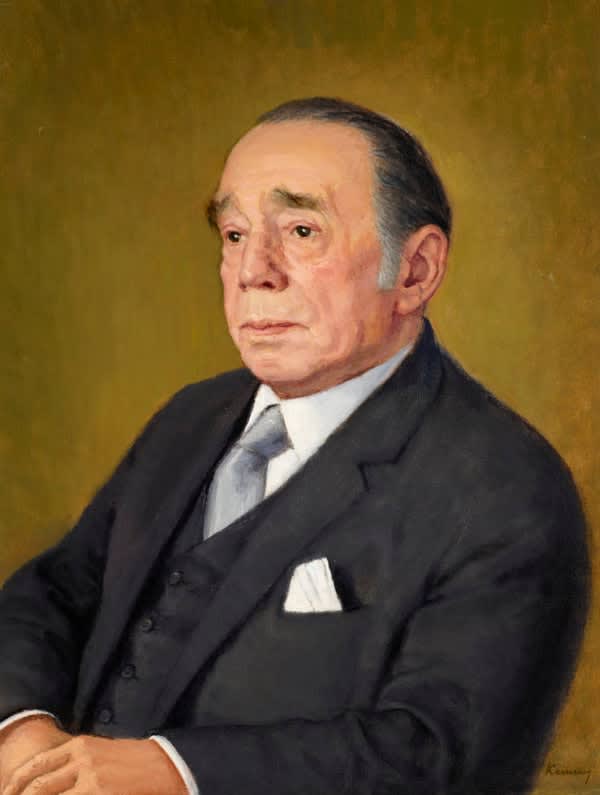Artist, critic and teacher Kalman Kemeny was born into a Jewish family in Nagykanizsa, Austria-Hungary (now Hungary) in 1896. As a child, he showed early artistic promise, drawing by the age of three and painting by the age of ten. He trained at the Academy of Fine Art in Budapest between 1913 and 1914, supporting himself by taking commissions. His studies were interrupted by the outbreak of the First World War in 1914 when he was drafted into the army, and upon the recommendation of his former professor, was appointed an Official War Artist, becoming, at the age of 18, the youngest war artist on the German-Austro-Hungarian front; he served as an officer on the Italian and Eastern Fronts between 1915 and 1917. Some of his sketches from this period are held in the archives of the Imperial War Museum, London; others were later sold at Christie's in 2005. The Imperial War Museum also holds his oral testimony in which he describes his memories of the conflict: 'I climbed up Monte Verena ... the destroyed Italian fortifications ... terrible battles, always to and from... enormous casualties'. After the war, Kemeny married, and moved to Austria, settling in Vienna where he won a scholarship to study at The Academy of Fine Art as a graduate from 1920-23, and then as a postgraduate from 1923-25, once again supporting himself by commissions. In 1925 he moved to Pilsen, Czechoslovakia, where he remained until, following the ceding of Czechoslovakia's northern frontier to Germany under the terms of the Munich Agreement in 1938, he left for England.
After settling in London with his family, he volunteered for service upon the outbreak of the Second World War, working in a Spitfire factory and as a fire watcher, while continuing to practise as an artist. He painted landscapes - many of St John's Wood, Maida Vale and Regent's Canal - as well as still lifes and portraits, including fellow refugees, such as the artist Max Sokol, as well as the writer, actor and life model Quentin Crisp and MP Hamilton Kerr. In 1945, Kemeny entered a portrait competition at Ben Uri, judged by Augustus John, who upon arrival at the exhibition hall, immediately pointed to Kemeny's entry and pronounced: 'that's the best, that's the winner'; then, when it was pointed out that there were further entries in an upstairs room, he pointed to a second portrait, saying 'forget the chap downstairs - that one is the winner' - it was, of course, Kemeny's other entry. As a result, Kemeny was commissioned to paint two prominent Ben Uri committee members, Mrs Robert Solomon and Cyril Ross (both Ben Uri Collection) and between 1948 and 1976 he also served on the Ben Uri Arts Committee. In 1956 he participated in the Tercentenary Exhibition of Jewish Art at the Whitechapel Art Gallery, London, alongside contemporaries including Jankel Adler, Jacob Kramer, Bernard Meninsky, Claude Rogers, Sam Rabin and Edward Wolfe. He also exhibited regularly at the Royal Academy summer shows and with the New English Art Club, both before and after the war, as well as in group shows in London at the Cooling and Leger Galleries and with Roland, Browse & Delbanco. A retrospective was held at Ben Uri in 1991. Kemeny was also a teacher of longstanding at both Hammersmith College of Art (1947-79), alongside Vivian Pitchforth and Ruskin Spear, and at Chelsea School of Art. For some years, he acted as advisor to the House of Commons Fine Art Committee. In later life, when his eyesight deteriorated, he turned to sculpture and ceramics. He died in London, England, in 1994, at the age of 97. His work is represented in UK public collections including the Ben Uri Collection, the Hamilton Kerr Institute at the University of Cambridge, and the Imperial War Museum, London.


